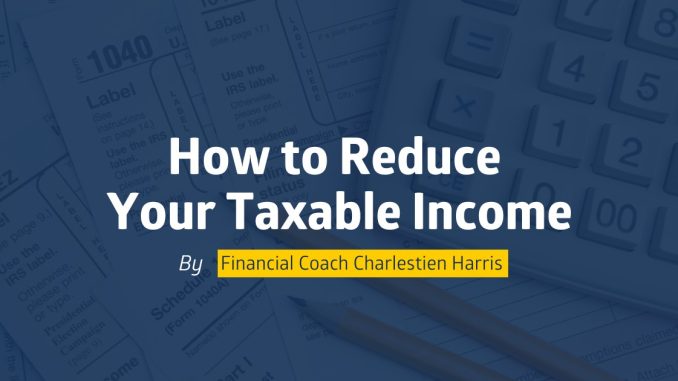
For many individuals and businesses, the annual tax season can feel like a daunting inevitability, a time when a significant portion of hard-earned income is surrendered. However, with careful planning and a thorough understanding of the tax code, it is possible to legally and strategically minimize one’s taxable income, thereby allowing for greater financial retention and accelerated wealth building. This isn’t about avoiding taxes altogether, but rather about optimizing your financial decisions to ensure you pay only what is legally required, taking full advantage of available deductions, credits, and tax-advantaged accounts.
One of the most fundamental strategies for minimizing taxable income involves maximizing contributions to tax-advantaged retirement accounts. For those employed by a company, a 401(k) or 403(b) plan offers a compelling opportunity. Contributions to these plans are made on a pre-tax basis, meaning the money you contribute is subtracted from your gross income before your taxable income is calculated. This directly reduces your current tax liability. For example, if you earn $70,000 annually and contribute $10,000 to your 401(k), your taxable income for that year immediately drops to $60,000. The funds then grow tax-deferred within the account, meaning you don’t pay taxes on investment gains until you withdraw the money in retirement, often when you’re in a lower tax bracket. Similarly, traditional Individual Retirement Accounts (IRAs) offer a similar deduction for contributions, depending on your income level and whether you’re covered by a workplace retirement plan. For self-employed individuals, SEP IRAs and Solo 401(k)s provide even higher contribution limits, offering substantial opportunities for tax deferral.
Beyond retirement savings, health savings accounts (HSAs) stand out as a uniquely powerful tool for minimizing taxable income, offering a triple tax advantage. If you are enrolled in a high-deductible health plan (HDHP), you may be eligible to contribute to an HSA. Contributions are tax-deductible, reducing your current taxable income. The money within the HSA grows tax-free, and most remarkably, withdrawals for qualified medical expenses are also entirely tax-free. This makes HSAs an excellent vehicle not only for current healthcare costs but also for long-term savings, particularly for medical expenses in retirement. Many savvy individuals use HSAs as an additional retirement savings vehicle, paying for current medical expenses out of pocket and allowing their HSA investments to compound tax-free over decades.
Another critical area to explore for tax minimization is the realm of deductions. While many taxpayers opt for the standard deduction, carefully itemizing deductions can often lead to greater tax savings, especially for homeowners or those with significant medical expenses or charitable contributions. For instance, mortgage interest on your primary residence and a second home can be a substantial deduction. State and local taxes (SALT) are also deductible, though capped at $10,000 annually. Medical and dental expenses exceeding 7.5% of your adjusted gross income can be deducted, encompassing a wide range of out-of-pocket costs from doctor’s visits to prescription medications.
Charitable contributions offer a twofold benefit: supporting causes you care about and potentially reducing your taxable income. Cash contributions to qualified charities can be deducted, subject to certain adjusted gross income (AGI) limitations. Donating appreciated assets, such as stocks or mutual fund shares held for more than a year, can be even more tax-efficient. Not only do you get a deduction for the fair market value of the asset, but you also avoid paying capital gains tax on the appreciation you would have incurred had you sold the asset yourself. Some individuals even “bunch” their charitable contributions, making larger donations in one year to exceed the standard deduction threshold and itemize, then taking the standard deduction in subsequent years.
For investors, strategic management of capital gains and losses is paramount. Understanding the difference between short-term and long-term capital gains is crucial, as long-term gains (from assets held for more than one year) are taxed at significantly lower rates than short-term gains, which are taxed at ordinary income rates. Employing a strategy known as “tax-loss harvesting” can further reduce your taxable income. This involves selling investments at a loss to offset any capital gains you’ve realized during the year. You can offset an unlimited amount of capital gains with capital losses, and if your net capital losses exceed your gains, you can even deduct up to $3,000 of those losses against your ordinary income, carrying forward any remaining losses to future tax years. This proactive approach to managing your investment portfolio can yield substantial tax savings.
Beyond these common strategies, there are other avenues to consider. For those with educational pursuits, deductions for student loan interest and certain education credits (like the American Opportunity Tax Credit or Lifetime Learning Credit) can significantly reduce taxable income or directly lower your tax bill. If you’re a teacher, you may be eligible for an educator expense deduction for classroom supplies. Individuals with a home office for legitimate business purposes might also qualify for a home office deduction, subject to specific IRS rules.
Ultimately, minimizing your taxable income is an ongoing process that requires proactive planning and a willingness to understand the nuances of tax law. It’s not a one-time event but rather a continuous effort to optimize your financial behaviors throughout the year. By consistently contributing to tax-advantaged accounts, meticulously tracking deductible expenses, strategically managing your investments, and staying informed about changes in tax legislation, you can legally and effectively reduce your tax burden. While the tax code can appear complex, the rewards of intelligent tax planning — more money in your pocket to save, invest, or spend — are undeniably worth the effort, paving the way for greater financial security and peace of mind. Consulting with a qualified tax professional can provide personalized guidance tailored to your specific financial situation, ensuring you maximize every available opportunity to minimize your taxable income.